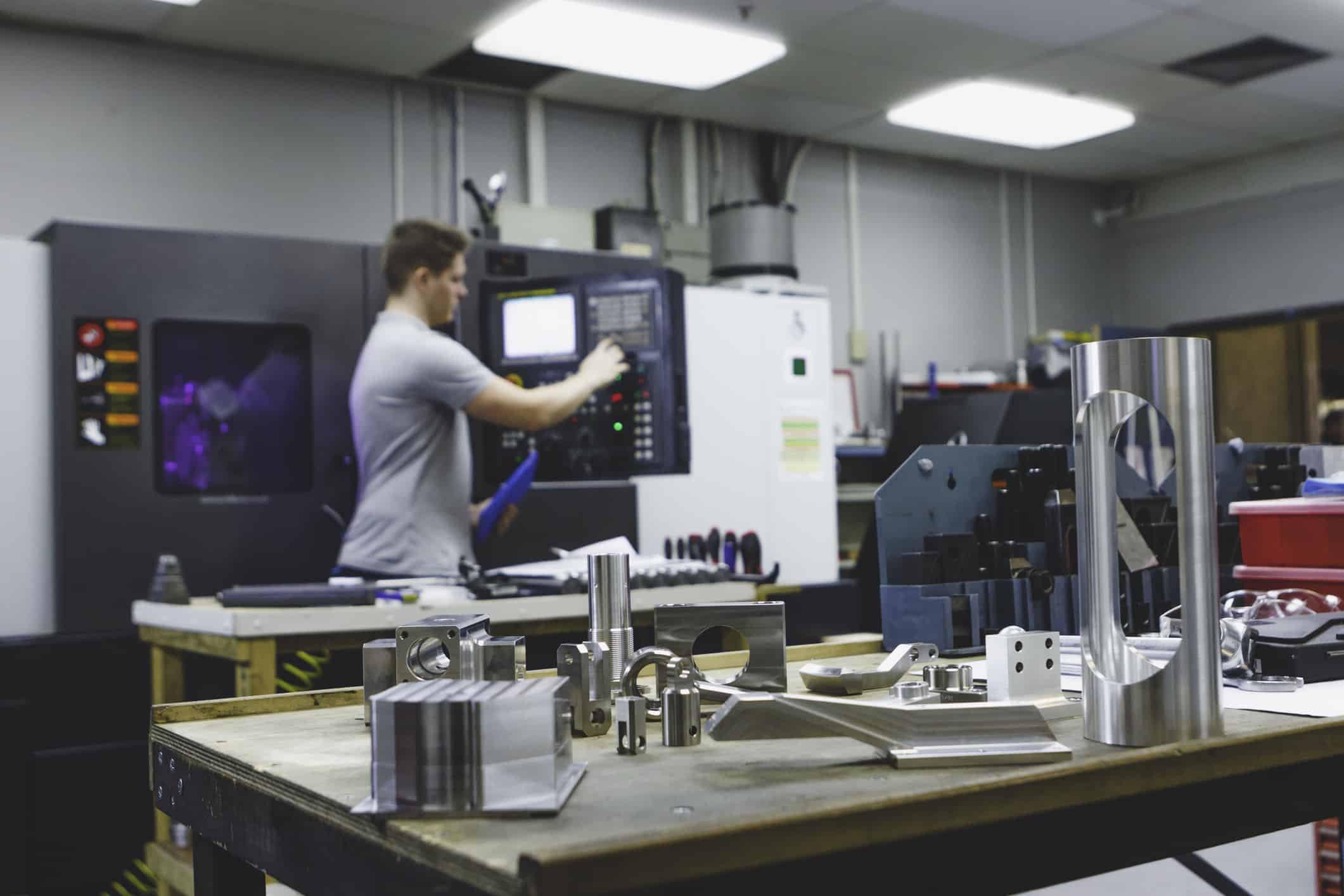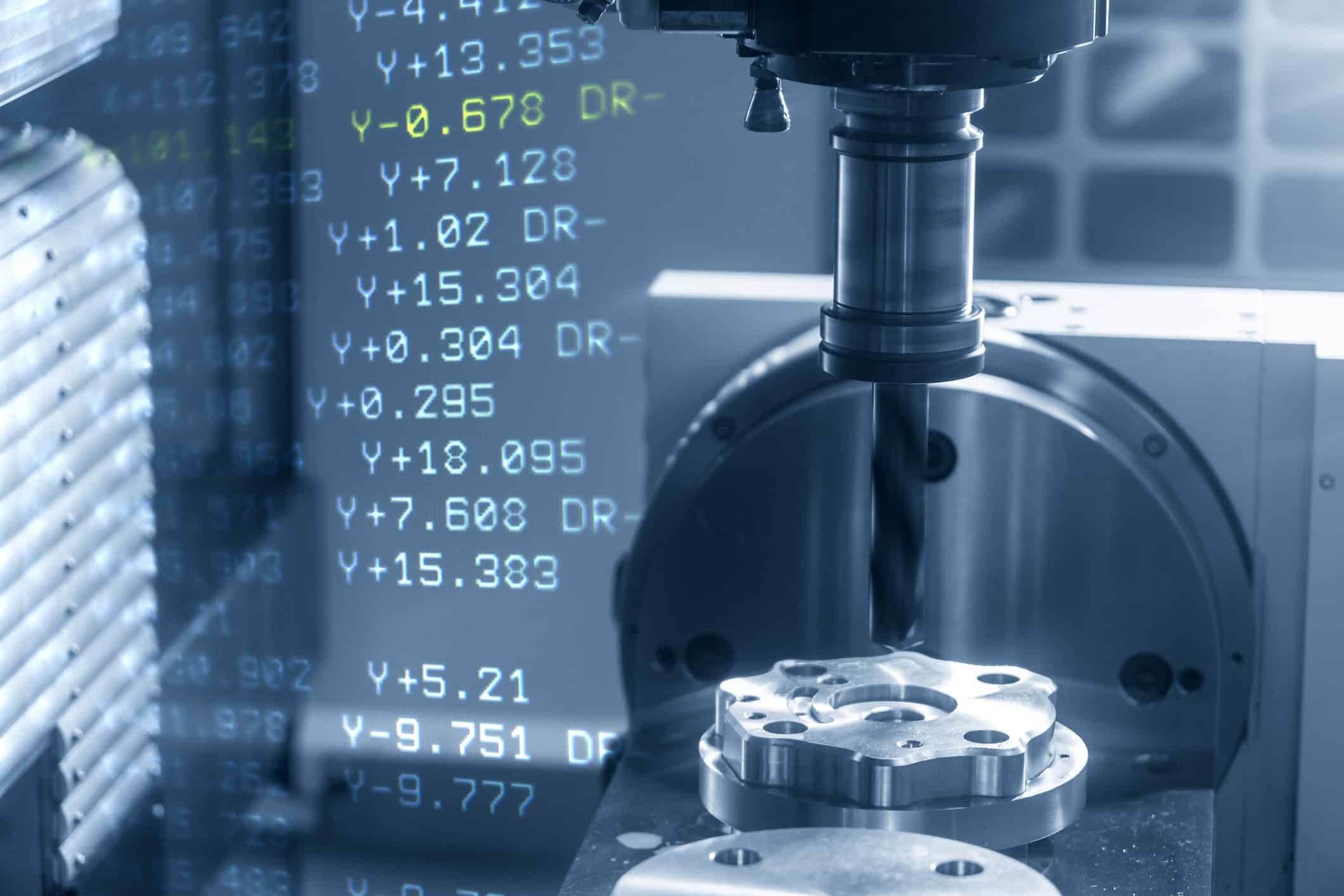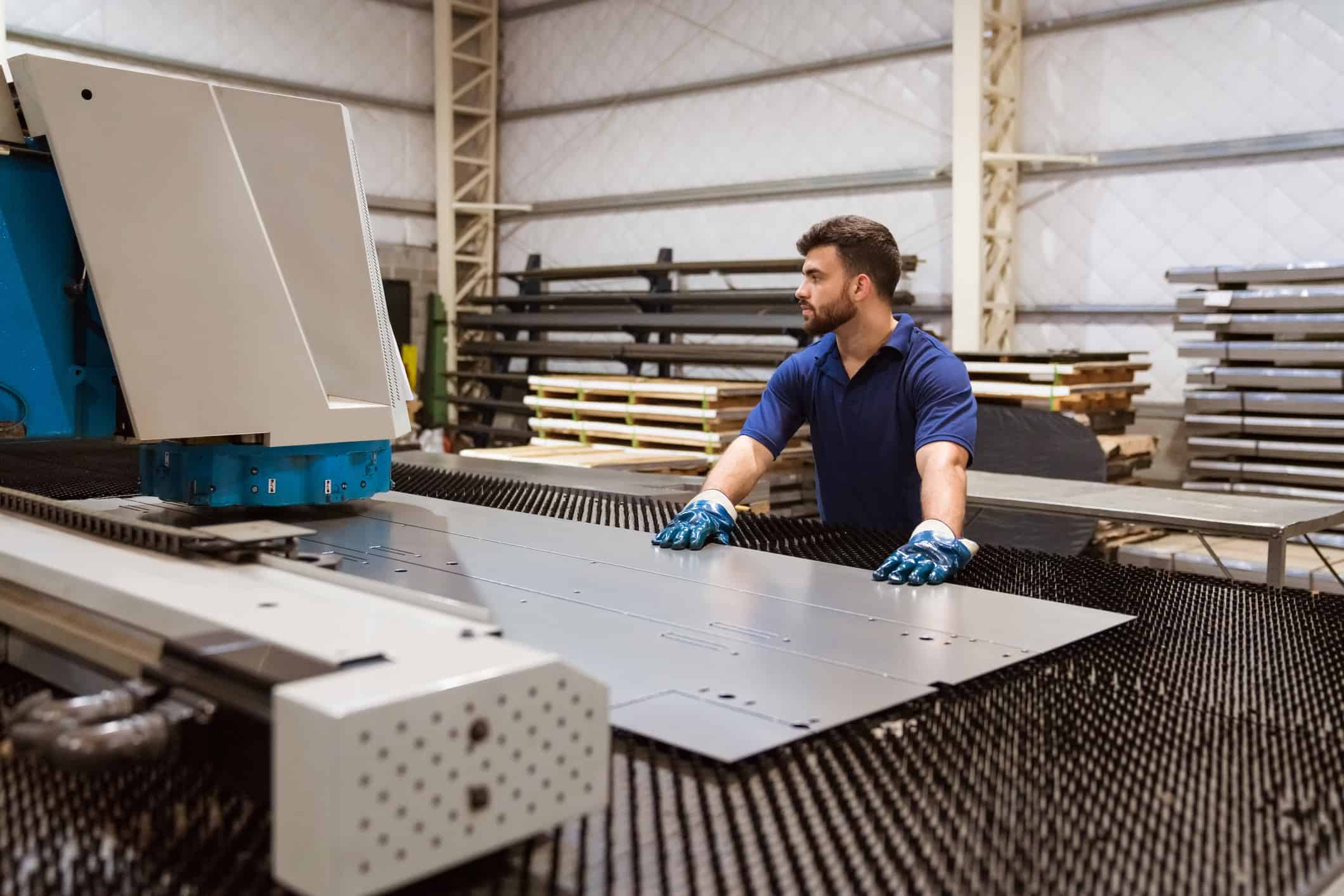CNC Machining
MFG’s database includes thousands of CNC machining businesses. Find your match.
Or, are you a manufacturer?
What is CNC Machining?
A computer numerical control (CNC) machine can be used in many different ways to manufacture parts. It can be used to 3D print using polymer materials, it can be used as a conveyor system fed by lasers and sensors, or it can be used as a pick-and-place solder machine for semiconductor production.
Typically thought of as autonomous metalworking machines cutting raw materials into their finished product, CNC machines have evolved into three different categories.

CNC machine and parts
Three Types of CNC Machines:
Milling (3, 4, 5 axis)
Whether they are horizontal boring machines or vertical milling centers (VMC’s), milling machines are the most popular thanks to their versatile 3+ axis machining capabilities.
Turning (2, 3, 4 axis)
Any round component such as a bolt/fastener, automotive wheel, or rocket nozzle is almost always produced on a CNC lathe, used for cylindrical components.
Wire EDM
Known for their extreme precision and repeatable accuracy, wire EDM machines use a combination of specialized water and electromagnetic current to remove very precise, human hair-sized cuts in a metal workpiece.

CNC machining was originally a manual process, used during the Industrial Revolution. CNC operators manually cranked handwheels and adjusted cutting tools to complete projects.
As computer technology evolved, CNC operators saw changes to the motion control and planning systems that make up the backbone of the computer-automated CNC machines we see today.
Today we have robots, pallet conveyor systems, smart sensors, and various components that are capable of making a manufacturing factory floor fully autonomous.
Get an Instant and Competitive CNC Machining Manufacturing Quote
- Easily find the custom part manufacturer your project requires
- Get instant and competitive quotes on your RFQs
- All uploaded files are securely stored on MFG and only released to manufacturers at your discretion
Note: MFG does not service the textile, jewelry, or clothing industry.
Request a Quote
Have part files ready?
Submit an RFQ in 2 easy steps.
Step 1
Upload your part file below.
Drag and drop a file here or click to upload
Oops! The file size needs to be less than 500 MB. Please upload a small file.
All files are protected by the MFG Standard NDA and are securely stored on MFG.
Step 2
Just a few extra details.
Your Contact Information
Let them know how to contact you.
All information is transmitted and stored securely. We will never sell your information.
Congratulations!
We have received your RFQ! Once accepted, we will contact you.
Hi! Did you know you can keep track of this RFQ in your MFG Community account?
How do CNC Machines work?
CNC machines perform various manufacturing operations, to include milling and lathing, punching and pressing, bending and forming, 3D printing, and much more. Most CNC machines have similar mechanical compositions, however, composed of the following individual systems and components:
CNC Control
The first ‘C’ in CNC stands for ‘Computer,’ acting as the ‘brains’ for any piece of automation equipment, and driving all the motion controls for the machine. Prior to operation, a CAM (Computer Aided Manufacturing) programmer will typically write out a CNC program which is later fed into the CNC control by wire or USB Stick. The CAM program directs where the machine needs to move, when, for how long, at what speed, etc.
Ball Screws & Servo Motors
These pieces of automation hardware allow the machine to move along its axis throughout a cycle run of the CNC machine.
Cutting Tools
The removal of large amounts of metal at a high speed for consistent hours is no easy feat, and has demanded an immense amount of development into the very tools that help production flow effortlessly.
Accessories
To further increase throughput, efficiency, speed, and volume, the average CNC Machine can be outfitted with pallet-changers, workholding/fixturing parts, and a variety of other add-ons. Along with quick feeds and speeds, exceptional tooling, and beefy hardware, bolt-on accessories provide tremendous performance boosts to CNC machining.
Enclosure
High-production CNC machining includes cutting fluid/coolant and tool-changers. A large, sheet metal enclosure around the machine contains the chips, coolant, and debris, making it easier to clean.
To better explain how CNC Machines work, let’s look into a few of the CNC machine mills available.
CNC 3-Axis Mill
Raw pieces of metal are placed on the table in a vise or a workholding fixture. The metal piece moves on an X & Y axis, working within specific parameters. The column contains the metal cutting tool on the CNC machine, and acts as the third or Z axis on the machine.
For comparison, let’s look at a 2-axis lathe to see the differences
CNC lathes usually only have 2-axis capability, and can only manufacture round parts. The cylindrical workpiece/raw material is typically held in a 3-jaw chuck like the one pictured. With CNC turning the cutter is stationary, while the workpiece is constantly spinning.

CNC milling machine
How CNC Machines automate projects
Lights-out machining has been a new phenomena in recent years, with many production houses using automation to run their operations 24/7, whether staffed first shift, or completely un-manned during the third shift.
Automotive
The US auto industry produces nearly 10 Million vehicles annually. Whether through stamping, forming, casting, or machining, making trucks and passenger vehicles is a prime example of automated machinery working in synchronization. From raw material smelting equipment to an array of CNC machines, pallet changers, and robotics, automation is at the heart of vehicle manufacturing.
Aerospace
In recent years, the re-usability of rockets and space vessels has encouraged many entrants to the new age space race. Blue Origin and NASA require internal manufacturing capabilities with external supply chains for their extensive programs. They may rely on CNC machining to manufacture extremely rigid, durable components to withstand the harsh environments of outer space.
Industrial Equipment
CNC machining is used to manufacture industrial equipment parts, but for performing maintenance, repair & overhaul (MRO) for existing machines that have broken down.
Tool & Die/Mold Making
Plastic injection molding often requires a large bit of automation on the front end. For large scale injection molding there is always a requirement for precise tooling or molds, quick turnarounds, and competitive pricing.
CNC machining allows engineers and manufacturers to develop a complete system on their shop floor to maximize throughput.

Innovative manufacturing solutions like pallet-changers, robotic tending arms, carbide end mills, and extremely fast CNC machines help orchestrate a well oiled machine on the shop floor.
CNC machining also works with newer technology such as Smart Sensor, Industry 4.0, and IIoT (Industrial Internet of Things) capabilities. With the use of these technologies you can remotely monitor and control your CNC Machine from anywhere in the world. This infusion of technology into the realm of manufacturing has only just begun, and will certainly expand over the years as more startups and large OEM’s race to develop machines that are faster, smarter, and more intuitive than their competitors.